How to choose the best hedge
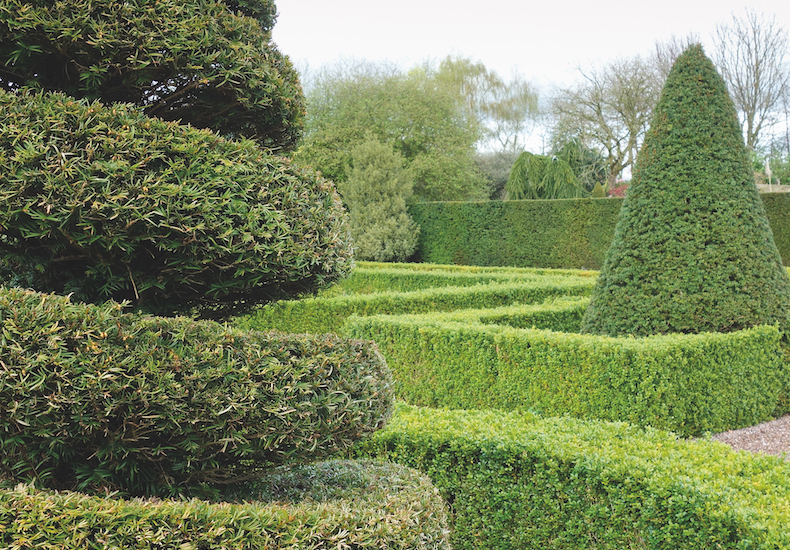
Choose the right plant for your hedge to suit your garden
Image: English yew from T&M
Formal or informal, the right hedging plants have the power to completely transform your garden. You can evoke an Italian feel, increase security, protect beds from prevailing wind, or just plant up an attractive boundary that’ll last for years to come. Whatever purpose your hedge will serve, here’s our choice of the best plants for your garden...
What to consider when choosing hedging plants?
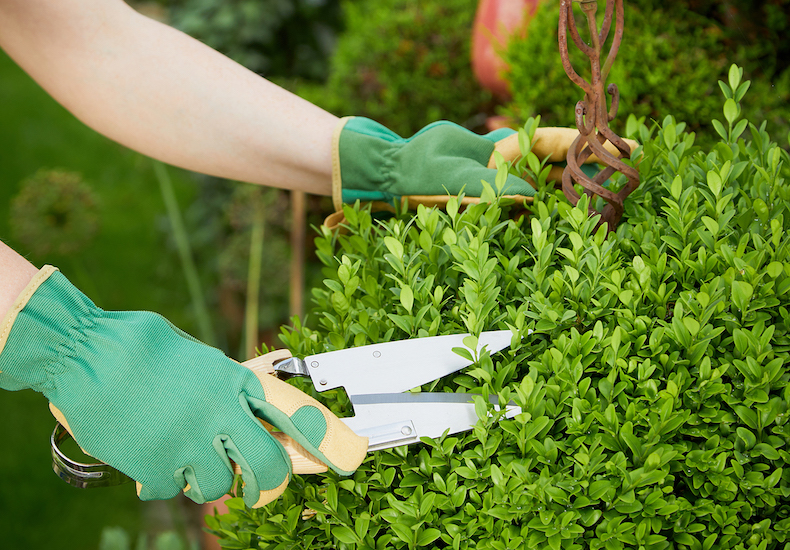
Some hedging plants may require trimming to keep them in check
Image: Privet from Thompson & Morgan
Before you start planting a hedge, consider whether you want a practical barrier or something more decorative. A functional windbreak will need to be evergreen, resilient and thick enough to be effective all year round. An ornamental hedge will need to be shapeable and attractive through all the seasons. With this in mind, you’ll need to think about:
- Shape. Choose tall straight plants for large scale screening, like lombardy poplars, or create a shorter shrubby hedge from lavender or rosemary for something less formal.
- Soil and aspect. A tender hedging plant may struggle to establish in a very exposed windy position. Soil quality and pH also play a role in determining what thrives in your garden.
- Height and width. Hedging plants grow to a range of heights at maturity. Choose your hedging by height to make sure you get something you can manage.
- Growth rate. An oak tree planted as a bare root sapling takes years to reach full size. Fast-growing plants like hazel quickly form effective barriers.
- Maintenance. If you want a formal hedge, you may need to trim, shape or train your plants. Consider the time and the skill you have to maintain a formal hedge. Remember that deciduous plants will drop their leaves annually, and any that fall on pathways may require raking.
- Toxicity. Don’t plant yew near the children's play area, the bright red berries look very attractive but are poisonous!
Bareroot vs container grown hedge plants
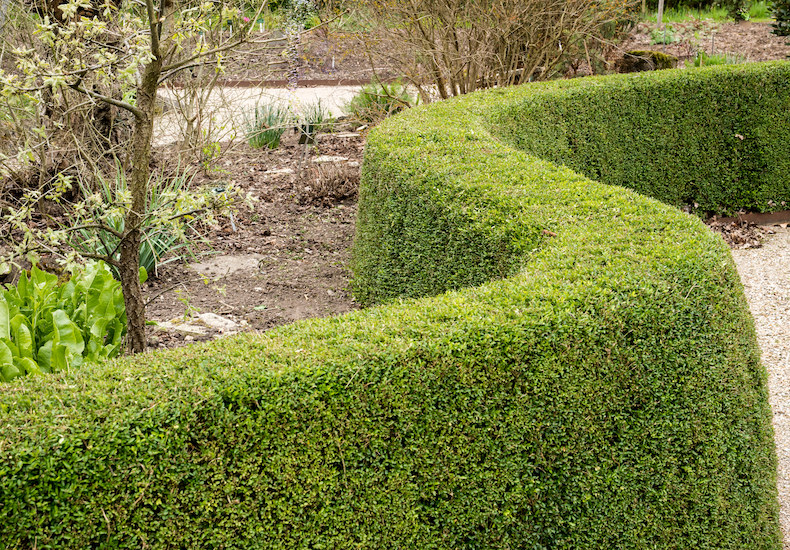
You don't need to plant your hedge in a straight line
Image: Lonicera nitida 'Elegant' from Thompson & Morgan
For a cost-effective hedge, plant bareroot saplings during the autumn and winter. The roots will establish over the colder months ready to support fresh growth come spring. Bareroot hedging is generally between 45cm (18”) and 90cm (35”) high on arrival, creating an initially low boundary that fleshes out over the years. Find out how to plant your bare root plants in our excellent guide.
If you want a more “instant” solution, simply choose potted trees or shrubs that are in leaf, and plant them out between autumn and early summer. You might find that shrubby low growing hedging plants are bushier when they’ve been grown in containers.
Seven popular hedge styles for your garden
Hedges are boundary markers made of plants and trees and, whether practical or purely decorative, you’ll get completely different results with different varieties. Here are seven of the best hedges to suit the needs of your garden, wherever you might be in the UK.
1. Best security hedging plants
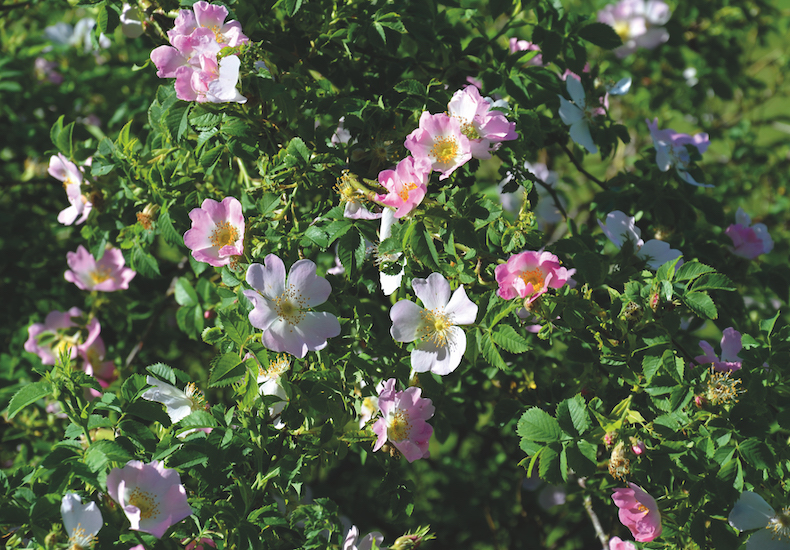
Choose thorns and spikes for a security hedge
Image: Dog rose from Thompson & Morgan
Thorny and spiky plants deter unwanted visitors to your garden. Who wouldn’t be put off when facing a wall of thorns? This applies to four-legged visitors to your garden too. The best varieties for security include:
- Blackthorn - long thorns and dense growth make this an ideal security hedge. Prolific white flowers in spring and edible sloes in autumn make it even better.
- Dog rose - vigorous growth covered from top-to-toe in very spiky thorns.
- Hawthorn - a common sight along most of Britain’s country hedgerows, hawthorn is another dense, thorny, thicket-forming shrub that forms a very effective barrier.
- Holly - whilst not as large and sharp as other thorny shrubs and trees, each evergreen leaf is edged with prickles. The bush grows densely enough to prove difficult to push through.
- Ramanas rose - the number of prickles and thorns on this rose deters intruders, and lovely bright flowers make it an attractive option too.
2. Best evergreen hedging plants
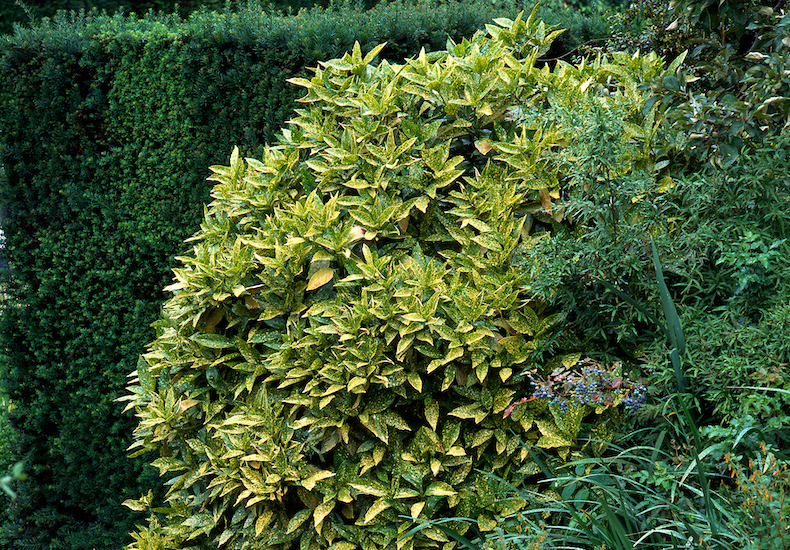
An evergreen hedge keeps its leaves throughout the year
Image: Aucuba japonica 'Crotonifolia' from Thompson & Morgan
An evergreen hedge provides dense, all-year-round privacy and protection from wind. In very exposed areas, a double row of plants is well worth considering for extra depth and protection. Varieties to consider include:
- Photinia x fraseri ‘Red Robin’ - low-maintenance and brightly coloured leaves make this evergreen plant a great choice.
- Privet – a traditional garden hedging plant with small leaves that is easy to grow and takes well to regular clipping.
- Yew – the small, densely growing leaves make this plant well suited to formal shaped hedging.
- Box - often used for topiary, box also suits lower growing hedges in small gardens and can be kept trimmed for a very neat and tidy appearance.
3. Best coastal hedging plants
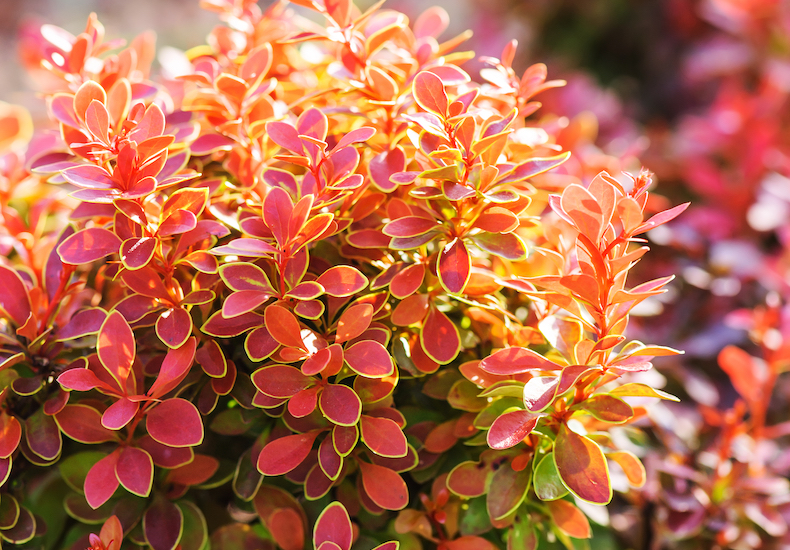
Berberis is a fast growing resilient hedging plant with attractive foliage
Image: Berberis thunbergii f. Atropurpurea 'Admiration' from Thompson & Morgan
A carefully chosen coastal hedge will tolerate salty air and strong winds - conditions that will kill off less hardy plants. Plants best suited to coastal hedging include:
- Sea Buckthorn - thorny (as the name suggests) with small but dense leaves, producing bright orange berries in late summer which are a good source of vitamin C. The male form will not produce berries.
- Golden Privet - a golden-leafed variety of the common hedging plant, this tough evergreen is perfect for coastal windbreaks and screens.
- New Zealand Broadleaf - fast-growing evergreen with a neat and tidy habit, ideal for windbreaks and screening.
- Rowan - this deciduous native finishes the year with colourful berries and grows very well in coastal areas.
- Field maple - this plant is native and deciduous, producing attractive winged fruits.
4. Best floral hedging plants
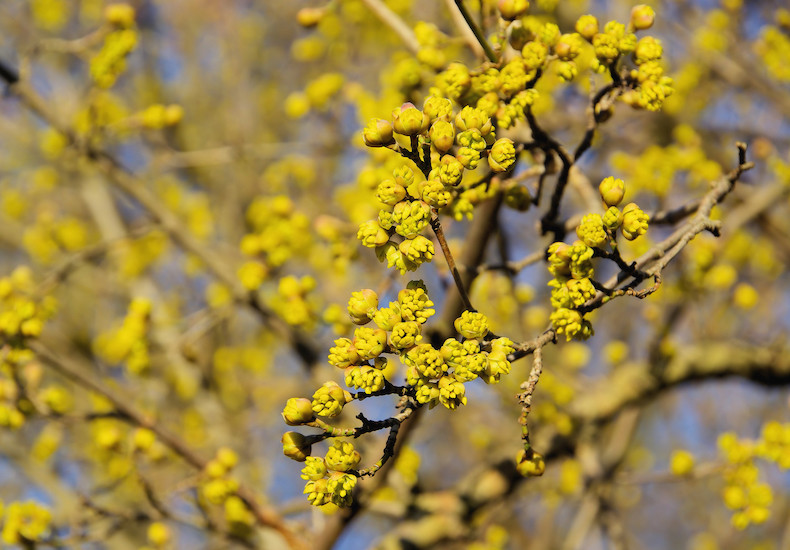
Flowering hedging plants bring colour to the garden
Image: Cornelian cherry from Thompson & Morgan
Floral hedging is beautiful for large parts of the year. Provide a backdrop of colour in your garden with these flowering hedge plants:
- Crab apple - beautiful pink flowers in spring turn into a crop of attractive crab apples in the autumn.
- Guelder Rose - this variety of viburnum is also called the snowball bush because of the profusion of white flowers in late spring and summer.
- Viburnum - dark foliage and bright white flower heads with blush accents in spring.
- Wild Cherry - sprays of white flowers in springtime cover this hedging plant from top-to-toe.
- Ornamental quince - very bright orange flowers in early spring.
- Rose hedging - roses make attractive, scented and impenetrable hedges with the right training. There are so many varieties that suit a hedge.
5. Best colourful hedging plants
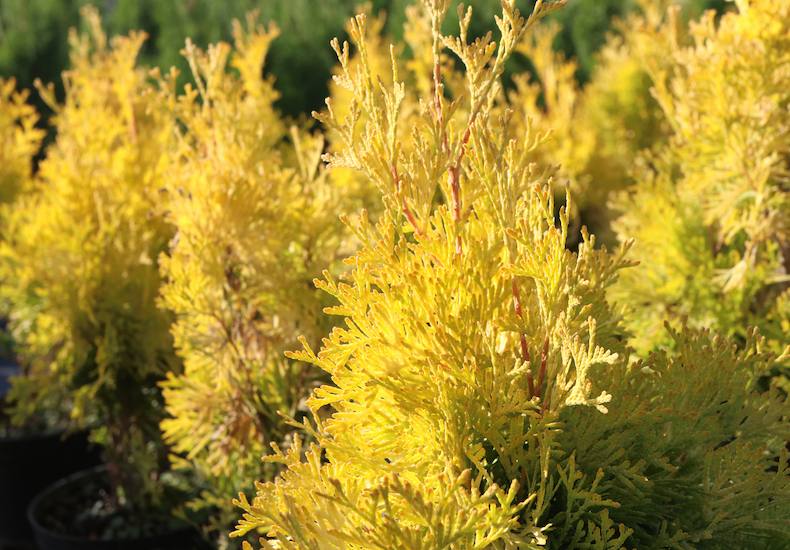
Make a colour statement with a white cedar hedge
Image: Thuja occidentalis 'Jantar' from Thompson & Morgan
There are lots of colourful hedging plants to choose from. Try a purple or golden hedge, or even a mixture of colours for a really striking boundary marker. Good examples of “non-green” hedge plants are:
- Copper Beech - densely packed, deep purple leaves cover this deciduous hedge, perfect for screening during the summer.
- Amelanchier - colourful leaves that change through the season and prolific white spring flowers.
- Golden Weeping Willow - silvery leaves appear on a golden yellow stem all year round.
- Red Leafed Rose - A dense thicket of purple/red leaves on similar coloured stems make this an attractive and effective hedging plant.
- Red Dogwood - beautiful bright stems through the winter, flowers in spring, and fresh green growth in summer.
6. Best native and wildlife-friendly hedging plants
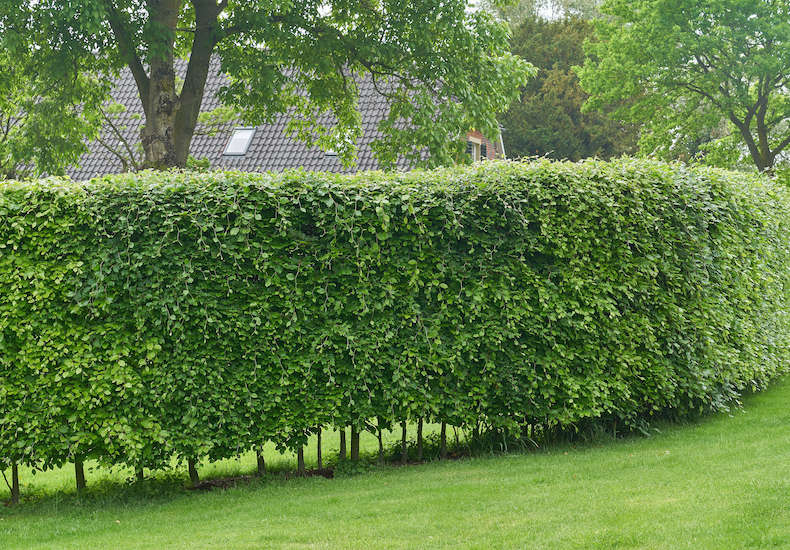
Native hedging makes a boundary that benefits nature too
Image: Hornbeam from Thompson & Morgan
Plant nature and wildlife hedge varieties to make a living boundary that offers food and shelter to our native birds and insects. Lots of indigenous plant species make a vibrant habitat as well as an extremely effective hedge. The best wildlife hedge options are:
- Hornbeam - suited to pollarding and coppicing if a larger or more informal hedge is wanted.
- Hazel - attractive catkins and nuts much loved by squirrels.
- Pussy willow - wavy stems and beautiful soft catkins.
- Elder – a true all-rounder in the hedgerow. Flowers in spring to attract pollinating insects, and produces berries for the birds in autumn.
- Sweet chestnut - a glorious native tree that produces edible sweet chestnuts in autumn.
- Spindle - a spectacular hedging plant for the bright pink and orange autumn seed heads. Supports a wide range of wildlife too.
- English oak - Quercus robur is an iconic English tree that makes a lovely hedge and supports plenty of wildlife.
7. Best edible hedging plants
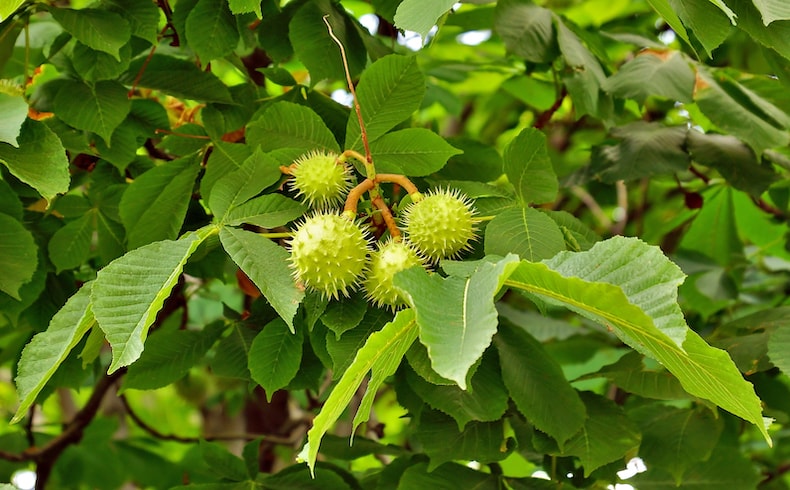
Edible hedging plants make a productive use of space
Image: Sweet Chestnut from Thompson & Morgan
Edible hedging plants produce fruit, nuts, or leaves that can be eaten straight from the bush, or cooked to make tasty jams or preserves. Some of our favourite edible hedging options are:
- Wild cherry - this native tree produces small edible cherries.
- Hippophae rhamnoides ‘Leikora’ - produces bright orange berries in the autumn that are packed full of Vitamin C.
- Cherry plum - harvest the edible miniature plums for jam making.
- Lavender - a highly-scented, low-growing hedging plant perfect for flavouring desserts and drinks.
- Sweet Bay - a resilient and highly aromatic hedge, the leaves impart flavour to stews and roasts during cooking.
We hope we’ve given you plenty of ideas to help create your dream boundary. Check out our guide to planting your hedge to help get your plants off to the best start. For further tips and helpful advice, head over to our dedicated tree and hedge hub page.
Sign Up For Exclusive Special Offers




© 2025 Thompson & Morgan. All rights reserved. A division of Branded Garden Products Limited.



